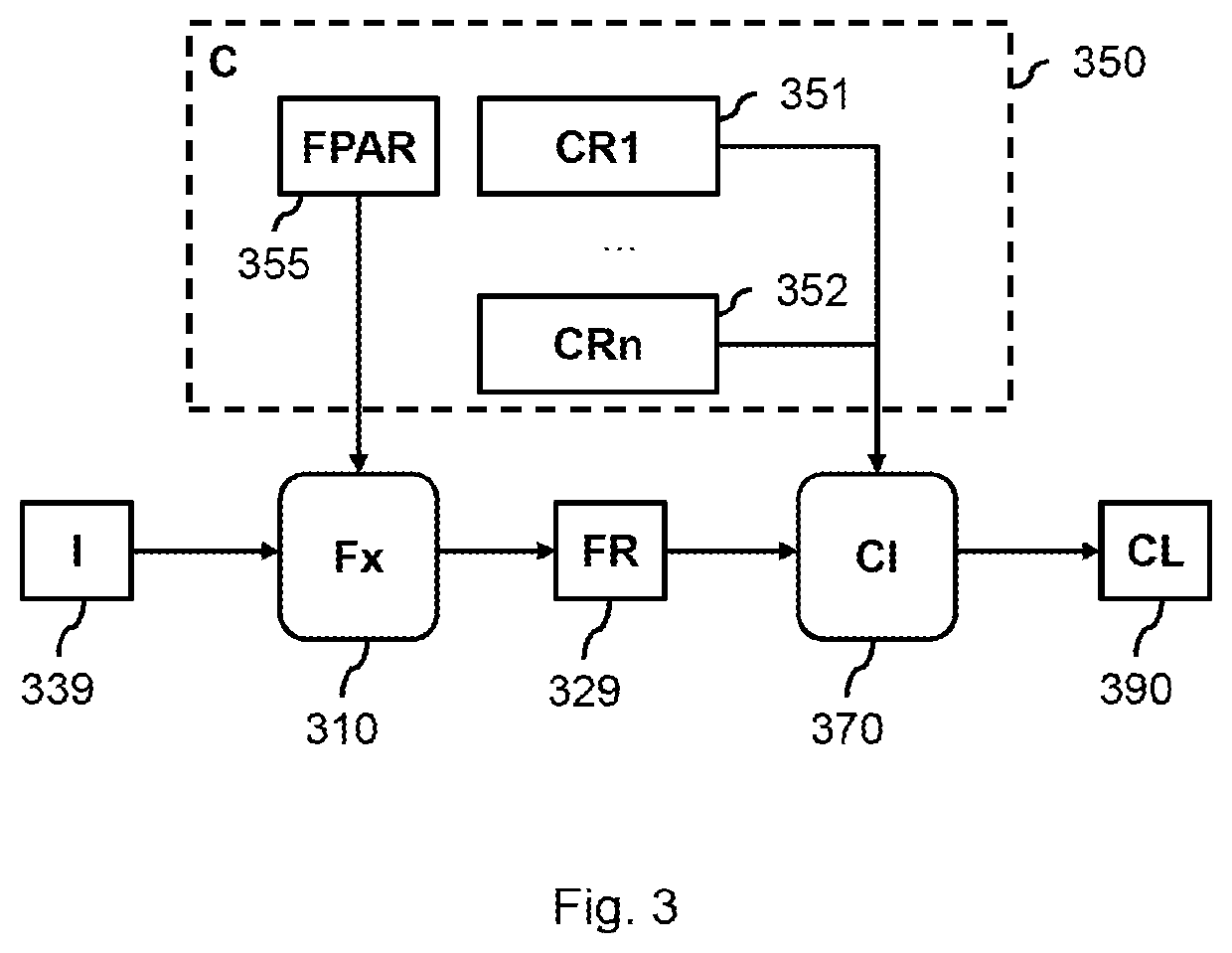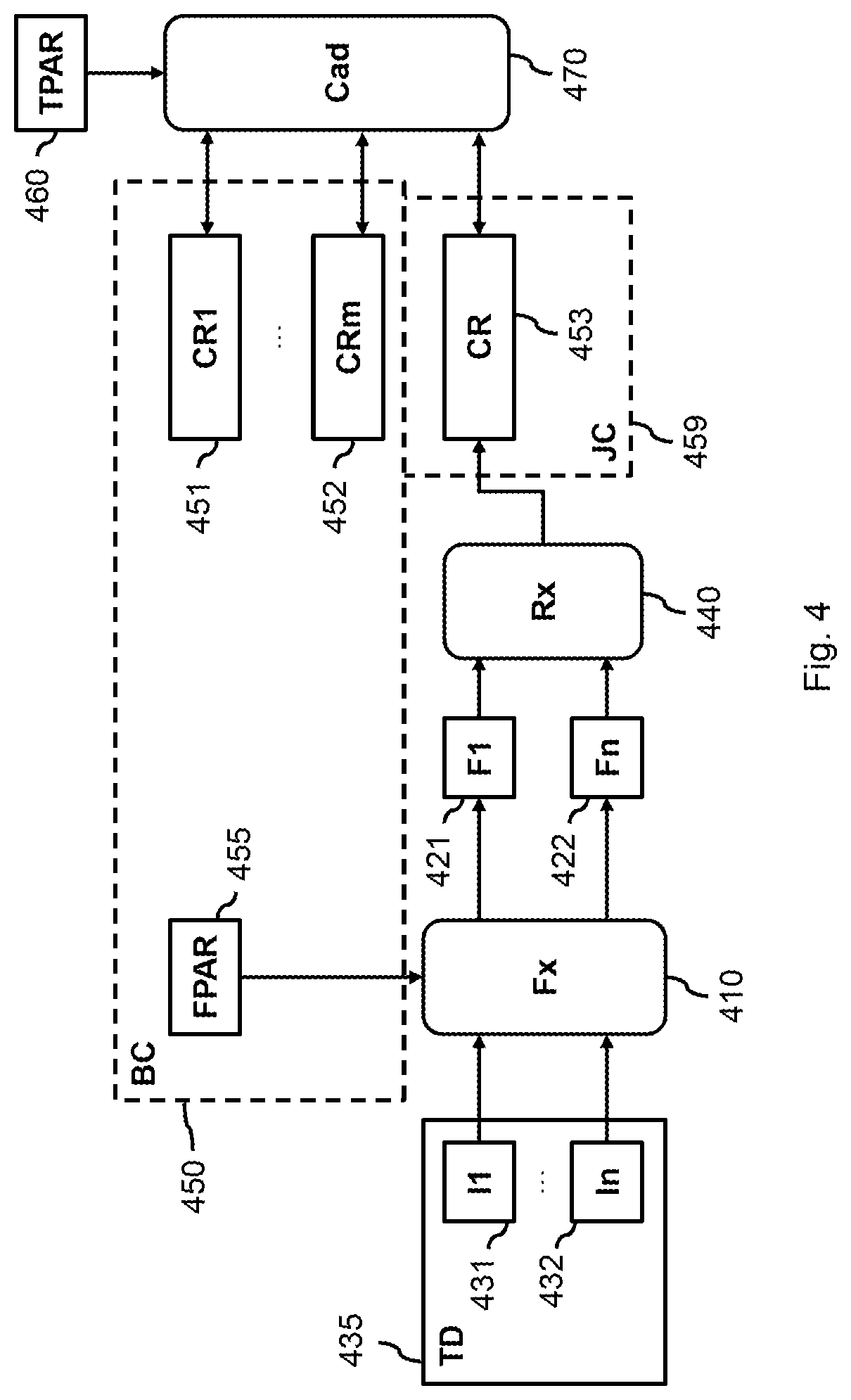Adapting a base classifier to novel classes
a base classifier and novel technology, applied in the field of adapting a base classifier to novel classes, can solve the problems of gfsl problem of classifying into both base classes and novel classes, and affecting the quality of machine learning models trained using conventional techniques. , to achieve the effect of reducing the number of parameters, reducing the loss, and reducing the loss
- Summary
- Abstract
- Description
- Claims
- Application Information
AI Technical Summary
Benefits of technology
Problems solved by technology
Method used
Image
Examples
Embodiment Construction
[0053]FIG. 1 shows a system 100 for adapting a base classifier to one or more novel classes. The system 100 may comprise a data interface 120 and a processor subsystem 140 which may internally communicate via data communication 124. Data interface 120 may be for accessing data 050 representing the base classifier. Data 050 may comprise class representations of one or more base classes of the base classifier. Data 050 may also comprise parameters of a feature extractor for extracting feature representations from instances. The base classifier may be configured to classify an instance into the one or more base classes by matching a feature representation extracted from the instance by the feature extractor to the class representations of the one or more base classes.
[0054]The processor subsystem 140 may be configured to, during operation of the system 100 and using the data interface 120, access data 050 representing the base classifier. For example, as shown in FIG. 1, the data inter...
PUM
 Login to View More
Login to View More Abstract
Description
Claims
Application Information
 Login to View More
Login to View More - R&D
- Intellectual Property
- Life Sciences
- Materials
- Tech Scout
- Unparalleled Data Quality
- Higher Quality Content
- 60% Fewer Hallucinations
Browse by: Latest US Patents, China's latest patents, Technical Efficacy Thesaurus, Application Domain, Technology Topic, Popular Technical Reports.
© 2025 PatSnap. All rights reserved.Legal|Privacy policy|Modern Slavery Act Transparency Statement|Sitemap|About US| Contact US: help@patsnap.com



